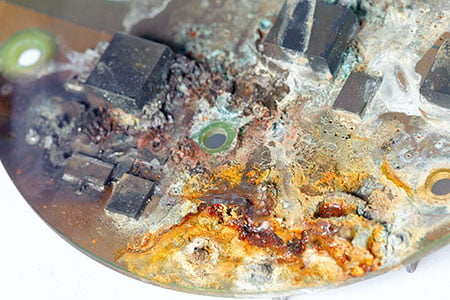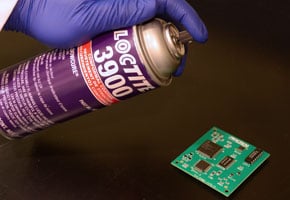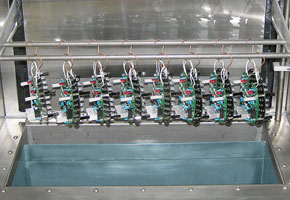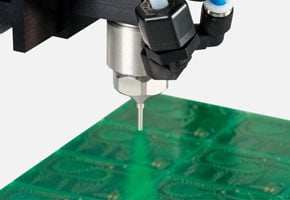Protecting Printed Circuit Boards
The Benefits of Conformal Coatings on Electronic Devices
 Manuel Dominguez
Manuel Dominguez
Engineering Sales Representative
Ellsworth Adhesives
Consumers expect their electronics to take a lot of abuse, yet device durability ultimately depends on how well internal electronics have been protected. Conformal coatings are routinely used to protect the sensitive printed circuit boards (PCBs) inside devices.
Conformal Coating PCB Protection
Since PCBs are small, delicate instruments, thin layers of acrylic, polyurethane, or silicone conformal coatings are applied to the PCB to protect against destructive elements such as:

- Chemicals: PCBs used in factory environments that have chemicals present, or in applications that require inert materials (such as sensors in storage tanks) require protection to prevent issues.
- Electrical stress: Electrical shorts, tin whiskers, electrostatic discharge, and other electricity-related events can negatively interact with a PCB.
- Environmental stress: Weather conditions such as extreme heat and cold, snow, ice, and wind are a common risk for outdoor applications that require PCBs.
- Mechanical stress: Vibration, drops, and impacts can damage a PCB without proper protection.
- Radio frequency or electromagnetic interference: Often used to isolate radio antennas, conformal coatings help prevent shielding insulation from coming in contact with the PCB to ensure it remains effective.
Types of Conformal Coatings
There are four principle conformal coatings materials that are effective for PCB protection: acrylic, polyurethane, silicone, and UV curing coatings. Each has inherent advantages and disadvantages, but how the conformal coating will be dispensed is also a necessary consideration.
| Conformal Coating Comparison Chart | ||||||
| Type | Moisture Protection |
Debris Protection |
Chemical Protection |
Ease of Application |
Ease of Removal/Repair |
Cure Time |
| Acrylic | + | + | - | + | + | + |
| Urethane | + | + | + | + | + | - |
| Silicone | - | + | + | + | - | +/- |
| UV Curing | + | + | + | - | - | + |
Conformal Coating Application Methods
Processing volume, factory floor space, manual versus automated application, and capital investment are all important factors when it comes to selecting the right conformal coating application method.

Brush
+ Inexpensive
+ Little to no masking
- Labor intensive (bad for high volumes)
- Accuracy & uniformity issues

Manual Spraying
+ Inexpensive
+ Good for high volumes
- Needs a skilled operator
- Multiple applications are often necessary

Dipping
+ Fast application & easy to operate
+ Coat multiple PCBs at one time
- Requires significant masking
- Accuracy & uniformity issues

Automated Spray
+ Execellent for high volumes
+ Very accurate
- Significant initial costs
- Robot maintenance
Which Conformal Coating is Right for My Application?
Protecting your PCB starts with choosing the right material. When selecting a conformal coating, there are four questions to ask:
- What will the PCB need to protect against
- What is the volume being produced?
- Is rework required?
- Are industry qualifications required (UL, MIL, IPC, IED, etc.)?
Choosing your material will help with selecting the right application method. Finding the best chemistry and application combination produces reliable devices, lowers costs, creates efficiencies, and develops a loyal customer base.
To learn more about protecting printed circuit boards, download the white paper:
Unsure of which conformal coating or application method is right for your electronic assembly? Contact us to get connected with our experienced Ellsworth Adhesives customer service team.